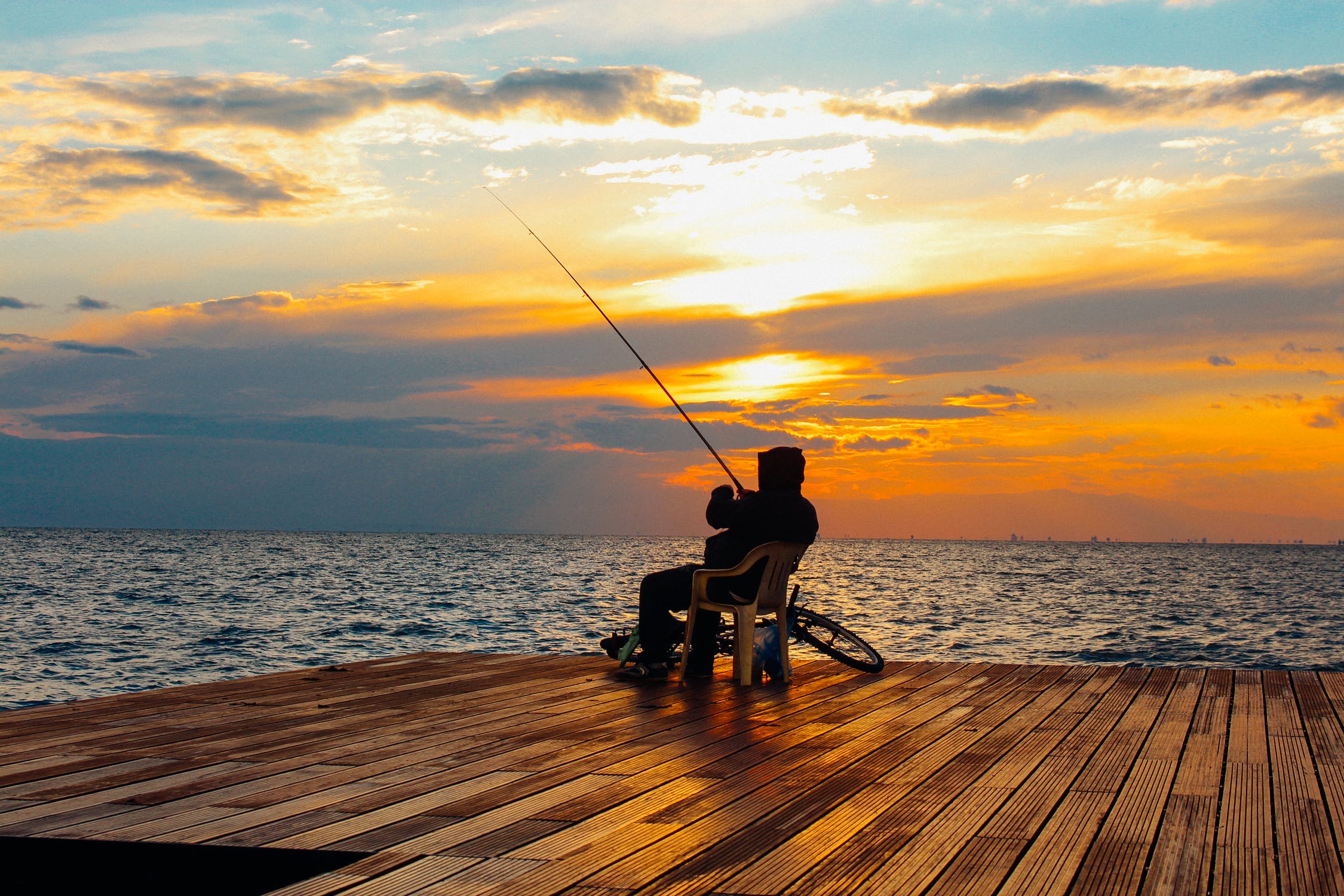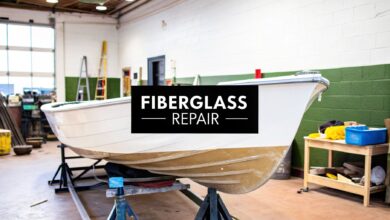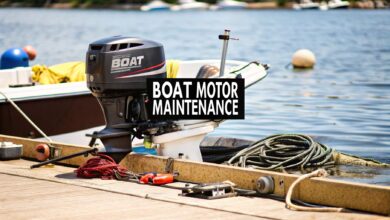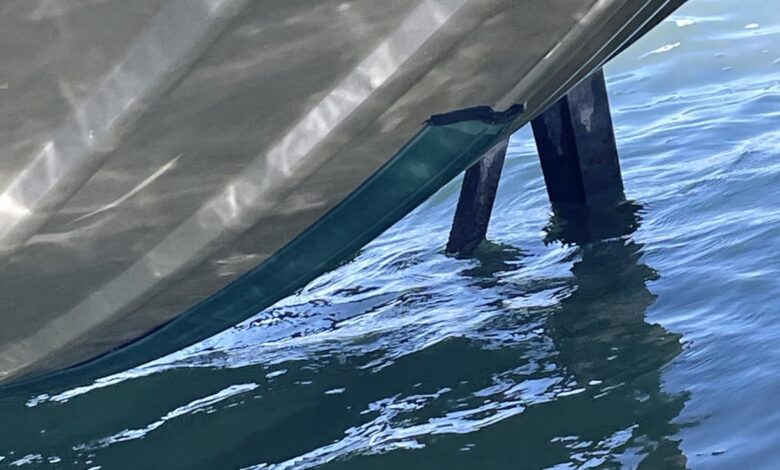
Have you debated getting a keel guard for your boat? Are you worried about whether it’ll damage your boat or affect performane?
In this article, I’ll address everything you need to know about keel guards.
What Are Keel Guards?
Keel guards are protective strips that are applied to the keel of a boat – otherwise known as the front of your boat. Your keel is often the first part of your boat to come into contact with obstacles like rocks, sandbars, and docks. This makes it susceptible to scratches, abrasions, and even more severe damage. Keel guards are designed to absorb these impacts and prevent damage to the boat’s hull, thereby extending the life of your boat and maintaining its performance and appearance.
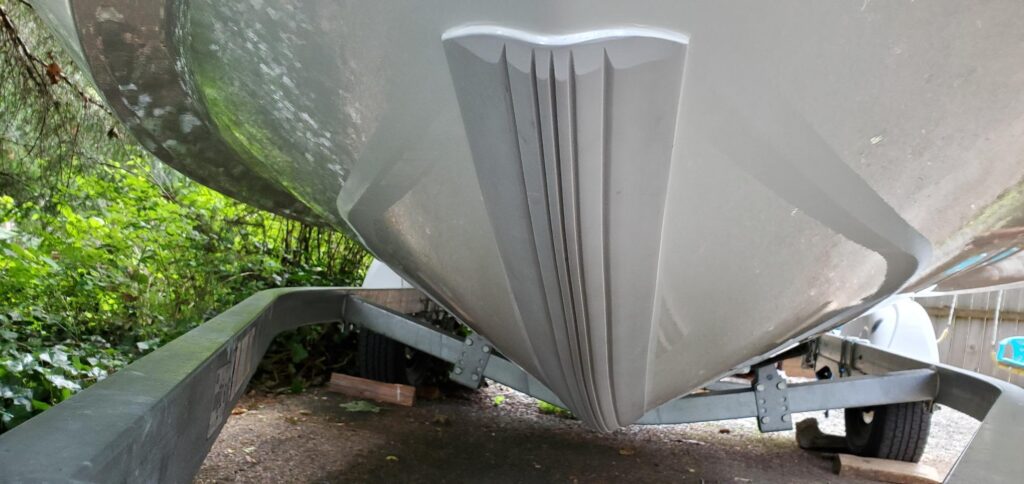
Keel guards are typically made from durable, abrasion-resistant materials such as polyurethane (aka rubber). They are engineered to withstand the harsh marine environment, including UV exposure, saltwater, and varying temperatures. .
How Much Do Keel Guards Cost?
Keel guards are relatively affordable and also a good DIY project. The cost of keel guards can vary significantly based on factors such as length (more on that in a minute), quality and brand. On average, keel guards can range from $100 to $300.
Here’s a general breakdown of keel guard costs:
- Boats up to 20′: $100 – $200
- Boats up to 30′: $200 – $300
- Boats up to 40′: $300 – $400
This is a broad estimate but it should give you a rough idea.
How Long of a Keel Guard Do I Need?
Selecting the appropriate size of a keel guard depends on the length of your boat. It’s crucial to cover the most vulnerable parts of the keel, typically from the bow to the start of the boat’s midsection.
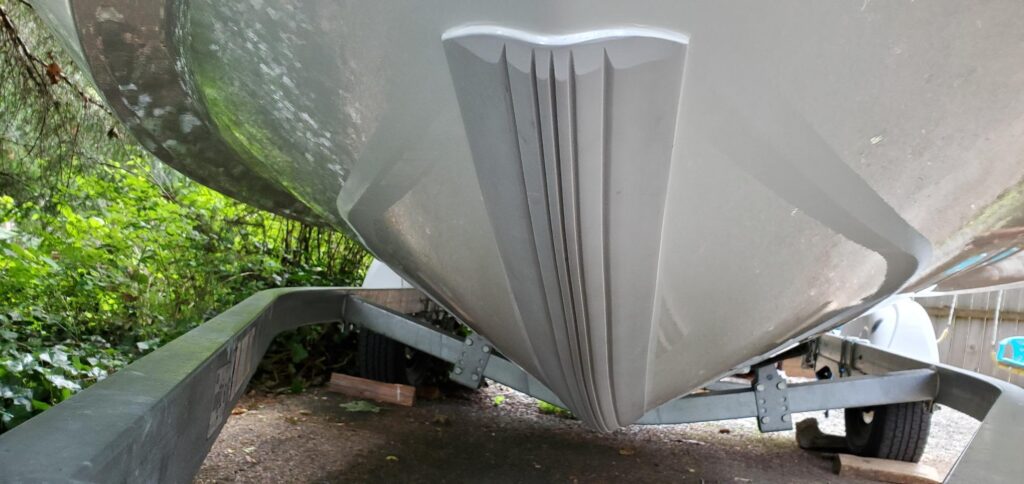
Here’s a helpful table to guide you in choosing the right size:
| Boat Length (Feet) | Recommended Keel Guard Length (Feet) |
|---|---|
| Up to 12ft | 4ft |
| 13 – 16ft | 5ft |
| 17 – 19ft | 6ft |
| 20 – 22ft | 7ft |
| 23 – 25ft | 8ft |
| 26 – 28ft | 9ft |
| 29 – 31ft | 10ft |
| 32 – 34ft | 11ft |
| 35ft and above | 12ft+ |
It’s advisable to measure your boat’s keel and consult the manufacturer’s recommendations to ensure proper coverage and fit.
Do Keel Guards Affect Performance?
One common concern among boaters is whether keel guards will impact the performance of their vessel. Generally, keel guards are designed to be as low-profile and hydrodynamic as possible. When properly installed, they should not negatively affect the boat’s speed, handling, or fuel efficiency.
However, if the keel guard is too large or improperly installed, it could potentially create additional drag or turbulence in the water. Generally though, you should see minimal or no performance degradation.
How Do I Apply Keel Guards?
Applying a keel guard is a straightforward process that can be done by most boat owners with basic tools and a little patience. The key to proper application is ensure proper prep of your fiberglass/gelcoat before application otherwise you the keel guard can start peeling like shown below.

Here’s a step-by-step guide to help you through the process:
- Preparation:
- Clean the keel thoroughly to remove any dirt, grease, or marine growth. Use a marine cleaner and a scrub brush for best results.
- Sand the area lightly to create a rough surface for better adhesion.
- Wipe the keel with a clean cloth and isopropyl alcohol to remove any remaining residue.
- Mark the Placement:
- Use masking tape to mark the starting and ending points of the keel guard on the keel.
- Ensure that the keel guard will cover the most vulnerable areas, from the bow to at least midway down the keel.
- Apply Adhesive:
- If your keel guard comes with a pre-applied adhesive, simply peel off the backing paper.
- For keel guards that require a separate adhesive, apply a generous amount of marine-grade adhesive along the length of the keel where the guard will be placed.
- Attach the Keel Guard:
- Carefully align the keel guard with the marks you made earlier.
- Starting from the bow, press the keel guard firmly onto the keel, working your way towards the stern.
- Apply pressure evenly to ensure good contact between the guard and the keel.
- Secure and Cure:
- Use a roller or similar tool to press the keel guard firmly into place, eliminating any air bubbles.
- Allow the adhesive to cure according to the manufacturer’s instructions. This typically takes 24 to 48 hours.
- Final Inspection:
- Check the keel guard for any loose spots or areas where the adhesive may not have adhered properly.
- Trim any excess material if necessary, ensuring a clean, finished look.
Conclusion
Keel guards are a valuable investment for any boat owner, providing essential protection for the keel and helping to maintain your boat’s integrity and performance. By understanding the costs, selecting the right size, and following proper application techniques, you can enhance your boat’s durability and enjoy worry-free adventures on the water. Whether you’re navigating shallow waters, beaching your boat, or docking at a busy marina, a keel guard offers peace of mind and prolongs the life of your beloved vessel.
